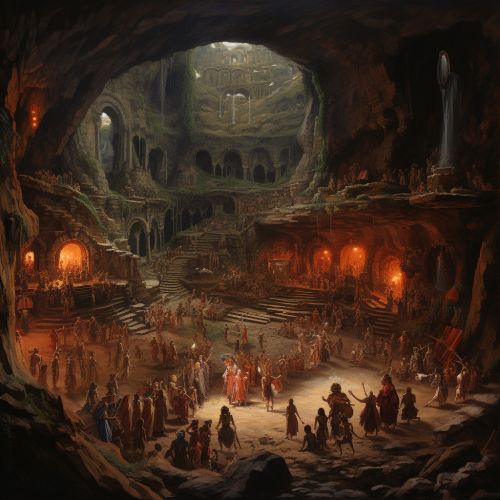Lupercalia
Origins and History
Lupercalia was an ancient, possibly pre-Roman pastoral annual festival, observed in the city of Rome on February 15, to avert evil spirits and purify the city, releasing health and fertility. Lupercalia was also called "dies Februatus", after the instruments of purification called "februa", which give the month of February (Februarius) its name.
The origins of Lupercalia are obscure and appear to be rooted in the ancient pastoral festival of the Roman period. The festival, which was originally held on February 15, was dedicated to Faunus, the Roman god of agriculture, and to the Roman founders Romulus and Remus. The festival was celebrated near the cave of Lupercal on the Palatine Hill (the central of the Seven Hills of Rome), to expiate and purify new life in the Spring.


Rituals
The rites of Lupercalia, which were confined to the Lupercal cave, the Palatine Hill, and the Forum, were overseen by a corporation of priests called Luperci, divided into two colleges called Quinctiliani and Fabiani, each named after the legendary figure who instituted it. Each Lupercalia began with the sacrifice by the Luperci of goats and a dog, after which two of the Luperci were led to the altar, their foreheads were touched with a bloody knife, and the blood was wiped off with wool soaked in milk; then the ritual required that the two young men laugh.
The sacrificial feast followed, after which the Luperci cut thongs from the skins of the sacrificial animals and ran in two bands around the Palatine hill, striking with the thongs at any woman who came near them. A blow from the thong was supposed to render a woman fertile. In the later times of antiquity, the Lupercalia had become a festival of fertility and love, and the striking of women is thought to have been a fertility rite.
Lupercalia and Valentine's Day
The Lupercalia festival was so popular that it continued to be celebrated well into the 5th century AD. It was only in 494 AD that Pope Gelasius I banned the Lupercalia festival and declared February 14 as Saint Valentine's Day. However, there are some scholars who argue that the association between Lupercalia and Valentine's Day is not accurate, and that the two are separate celebrations.
In Literature
Lupercalia is mentioned by several classical authors. In his work "Fasti", the poet Ovid offers the longest description of the Lupercalia. The festival also appears in the works of Plutarch, Julius Caesar, and others. The festival is also depicted in Shakespeare's play "Julius Caesar", where it is celebrated by Mark Antony.
See Also
- Roman festivals - Roman Kingdom - Romulus and Remus - Faunus - Ovid - Saint Valentine's Day
